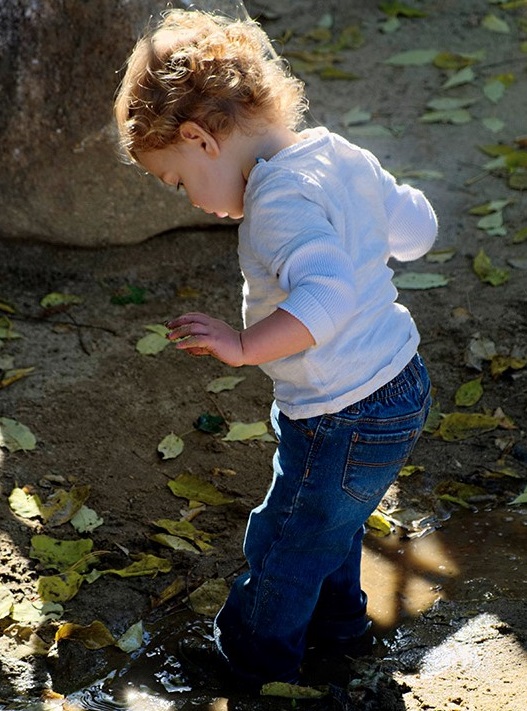When Wonder and Knowledge Collide

“I watched Stuart, a small boy in the infant room, show and tell with a twist and shaping of his small fingers all about the size and habits of a small insect that he had seen on a nature ramble:
‘The flicky things were a dark color, not black. They had little, little wings and long, long legs; they were so little nobody could see them—only me.’
Each wing, each leg was a thing in itself that he had to explain with his body movements, and his painting of this delightful ‘species’ was also full of the same child excitement that his teacher quickly recognized. She wrote down the story and praised him for it. However, another person was there at the time, a person concerned that such a loose, inaccurate description had been allowed to go unchecked.
‘Was it an insect, Stuart?’ he began. ‘How many parts did it have to its body? Did it hop? Why did you say it’s a ‘flicky thing?’ Did it fly?’ Of course there could be no answers. Stuart became more and more subdued, and when he was told to look more carefully in the future when he was doing nature study, I saw that he was about to cry… This is just the way children have their natural feeling for fantasy and wonder driven out of them.”
(In the Early World: Discovering Art Through Crafts; Elwyn Richardson; Pantheon Books; 1964)
We often marvel at children’s expressions of wonder. Their words, movements, artwork and theories are brought to us spontaneously, with excitement and joy. Children may become astonished, or quietly reflective when they experience wonder at the smallest details of a world they are compelled to comprehend.
The child in the photograph above is quietly discovering the sensations of her sneakers filling with water. Coolness, wetness, color, the smell of fall, splashes she creates. She is experiencing wonder during a situation that we, as adults, try to avoid; stepping in a puddle. Rarely do we become as captive to wonder as she was during that moment. Many of us become wistful in wishing that the world could hold as much wonder for us as it does for young children.
A young child’s wonder might lead to questions, to knowledge, or it may lead simply to a declaration, movement and artwork, as with Stuart. Of course, Stuart’s many forms of communication about the bug did involve learning. But could (and should) he have learned more during this experience?
How we respond to children’s unfiltered expressions will help the child determine whether wonder is a valid reaction to his observations. Is simply experiencing, enjoying and communicating about the bug, on his own terms, a valid experience for Stuart? Or must his state of wonder be augmented by knowledge?
Stuart’s teacher wrote down his story and praised him for it. The other person nearly brought Stuart to tears. When others who are uncomfortable with wonder for wonder’s sake benevolently attempt to turn each moment “teachable” (or learnable), knowledge may be experienced by the child as a denial of self.
Yet even while immersed in a state of wonder, many children will ask us for information on what has attracted their interest. This is an invitation to learn, and wise teachers have many ways of responding to these invitations.
But when a child does not invite knowledge, preferring to bathe in the experience of wonder as did Stuart, attempts to teach are clearly uninvited. And, as with Stuart, these uninvited interventions can pair learning and knowledge with discomfort.
The consequence of educational practices that deny wonder in favor of knowledge is already with us. For years, interest in science among children in the US has been seen to decline beginning around the fourth grade. Could we literally be teaching children away from wonder, however unintentionally?
We who work with children in Nature Explore Classrooms have unusually rich opportunities to keep wonder alive in our children. We can always teach young children about the world around them. But during those enchanting moments when children communicate wonder to us, we can honor their thinking with our own excitement. As with Stuart’s teacher, when appreciation is all that is wanted, we have means of sharing that with them. When further knowledge is wanted, we can elicit their thinking, and provide information when appropriate.
This opportunity we have to facilitate the delicate dance between wonder and knowledge is a privilege and a trust. When we get this balance right, we develop the kind of minds that thrive while learning. We develop children in whom knowledge could often have a component of wonder. And the seeds of wonder are always sprouting in nature.

